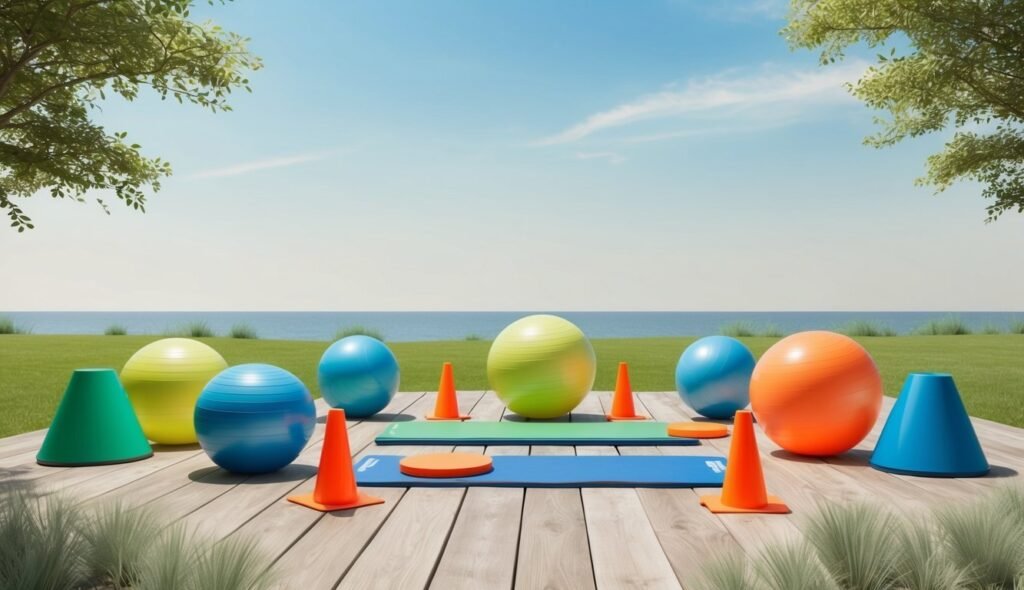Getting better at balance and coordination can make a big difference in your daily life.
Whether you want to feel steadier on your feet or improve your performance in sports, these areas are key. Adding specific exercises to your routine can lead to noticeable improvements in how you move and control your body.
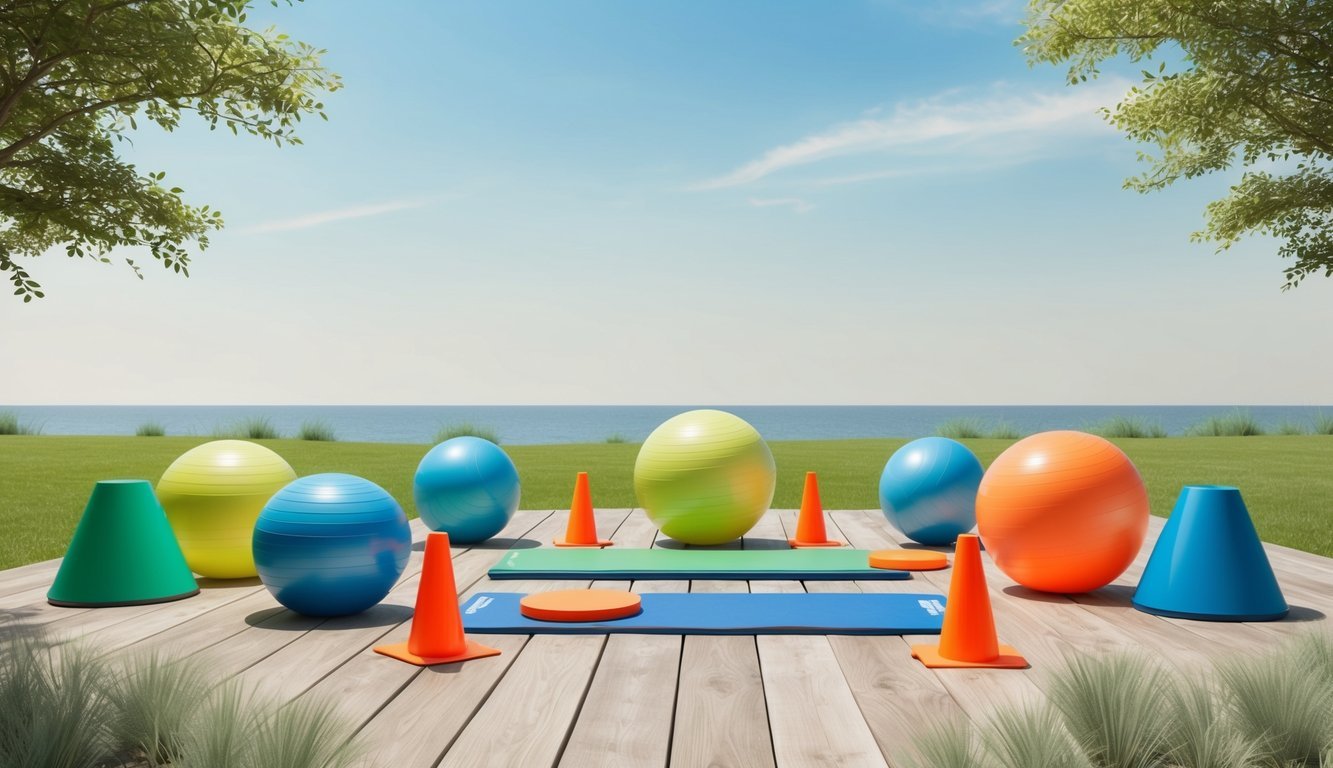
You might not realize it, but balance and coordination are part of nearly everything you do.
Thinking about how to improve them can help you stay active and reduce the risk of injuries.
With the right exercises, you can build a strong foundation for better movement.
Tai Chi
Tai Chi is a gentle exercise that combines slow movements and deep breathing.
It’s like a moving meditation that helps you find your inner calm.
This ancient Chinese practice is great for improving balance and coordination.
When you practice Tai Chi, you use fluid, graceful movements that strengthen your muscles and joints.
It might seem simple, but it can have a big impact on your body.
You will likely notice better balance as you become more familiar with the movements.
Tai Chi is suitable for all ages, especially older adults.
It’s not too intense, so you can enjoy it without straining your body.
Researchers have found that it effectively improves balance, which can help prevent falls in older people.
You don’t need special equipment or a gym to practice Tai Chi.
You can join a class or just follow along with a video at home.
This flexibility makes it easy to fit into your schedule.
Plus, it’s a social activity that you can enjoy with friends or family, enhancing not just physical but also mental well-being.
Studies suggest that regular practice leads to better balance control and eye-hand coordination in older adults.
So, next time you’re looking for a simple way to boost your balance, give Tai Chi a try!
2) Single-Leg Deadlift
The single-leg deadlift is a great way to boost your balance and coordination.
By standing on one leg while you perform the exercise, you work on stabilizing muscles.
This move not only strengthens your leg muscles, but it also engages your core.
Keep your back straight and hinge at your hips as you lower your torso.
You can hold a dumbbell or a medicine ball for extra resistance.
The key is to move slowly and focus on maintaining your balance throughout the movement.
New to this exercise? It’s a good idea to start without weights and use your body weight for practice.
As you get better, you can add weight and increase the difficulty.
The single-leg deadlift is perfect for people who want a challenge while improving stability.
Incorporating this exercise into your routine can help you enhance your overall coordination.
With regular practice, you’ll notice improvements in your balance and strength.
It’s a worthwhile addition to any workout plan focused on functional fitness.
3) Tree Pose
Tree Pose is a classic yoga move that really helps you work on balance and coordination.
To get into position, you stand tall and shift all your weight onto one foot.
Place the sole of your other foot on your inner thigh or calf, avoiding the knee.
Keep your hands in front of you or extend them overhead, like branches of a tree.
Try to hold this pose for 30 seconds to a minute.
If you start to wobble, that’s okay.
It takes practice, so just refocus and keep trying.
Tree Pose not only boosts your balance; it also strengthens your legs and core.
This is a great exercise to add to your routine, especially for increasing focus and stability.
If you’re interested in more exercises that help with balance, check out programs that use balance training like yoga and Tai Chi.
4) Bosu Ball Squats
Bosu ball squats are a fun way to level up your balance and strength.
You’re basically doing regular squats, but on an unstable surface.
This makes your body work harder to stay balanced, giving your core a solid workout.
Start by placing the Bosu ball with the flat side down.
Carefully step onto the center of the ball.
Make sure your feet are shoulder-width apart.
Bend your knees like you’re going to sit in a chair.
Keep your back straight and lower your body.
As you squat, focus on keeping steady.
This engages your core and leg muscles to maintain balance.
If you have trouble, try spreading your arms out for better stability.
Having a spotter nearby might be helpful.
Doing Bosu ball squats challenges both your physical and mental focus.
Over time, you can improve not just your balance but also your coordination.
It’s a great exercise to include in your routine if you want to mix things up and add a bit of a challenge!
5) Heel-To-Toe Walk
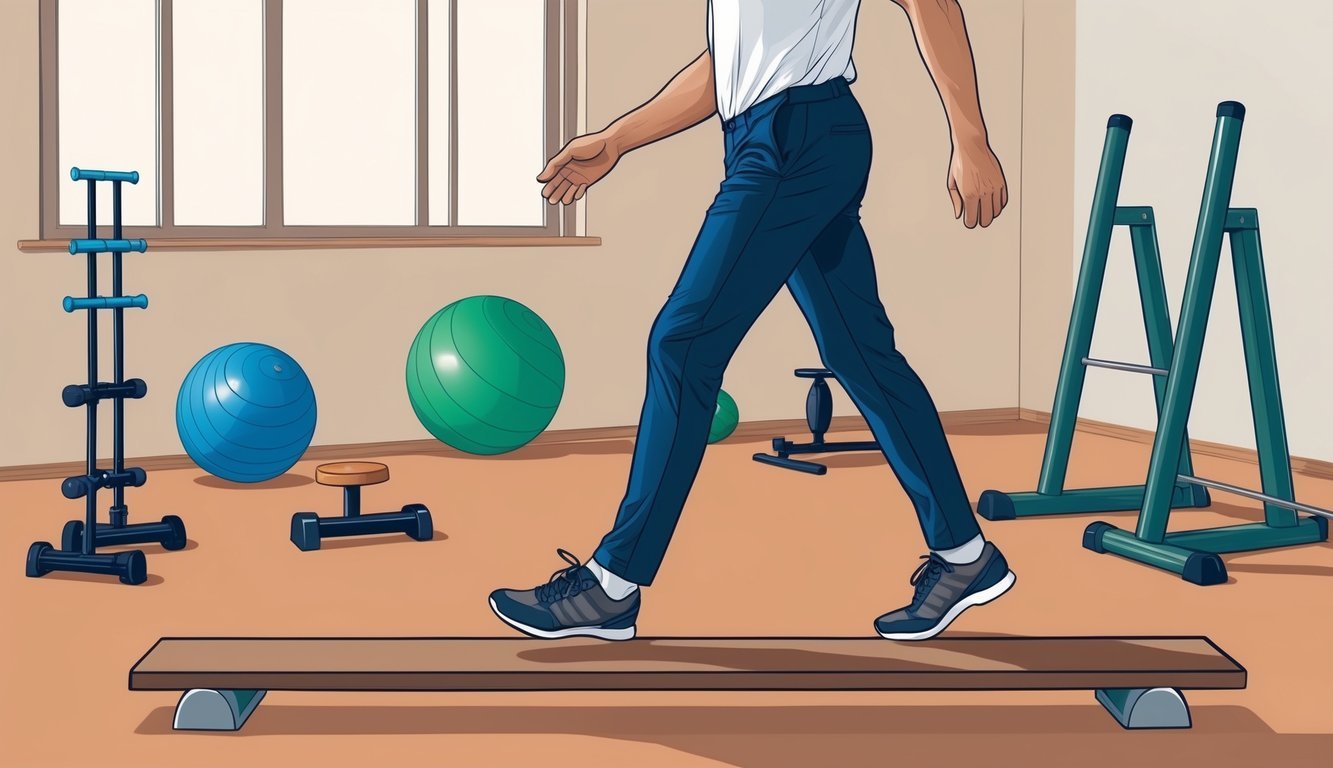
The heel-to-toe walk is a simple yet effective exercise to help you improve your balance.
To do this exercise, just walk in a straight line, placing the heel of one foot directly in front of the toes of the other foot.
Keep your eyes forward and your arms at your sides for better results.
This exercise helps enhance your coordination by strengthening the muscles in your legs and feet.
It also challenges your body’s sense of balance as you focus on keeping each step steady.
You can practice on different surfaces to further increase the challenge.
Doing the heel-to-toe walk regularly can be especially beneficial if you’re aiming to improve your balance skills.
It’s often used in coordination tests and rehabilitation programs.
Studies show that it can contribute to better equilibrium coordination.
Incorporating this walk into your routine is easy.
Just find a stretch of hallway, a sidewalk, or even a living room floor.
The more you practice, the steadier and more confident you’ll feel on your feet.
Keep practicing, and you’ll likely notice improvements over time.
6) Side Leg Raise
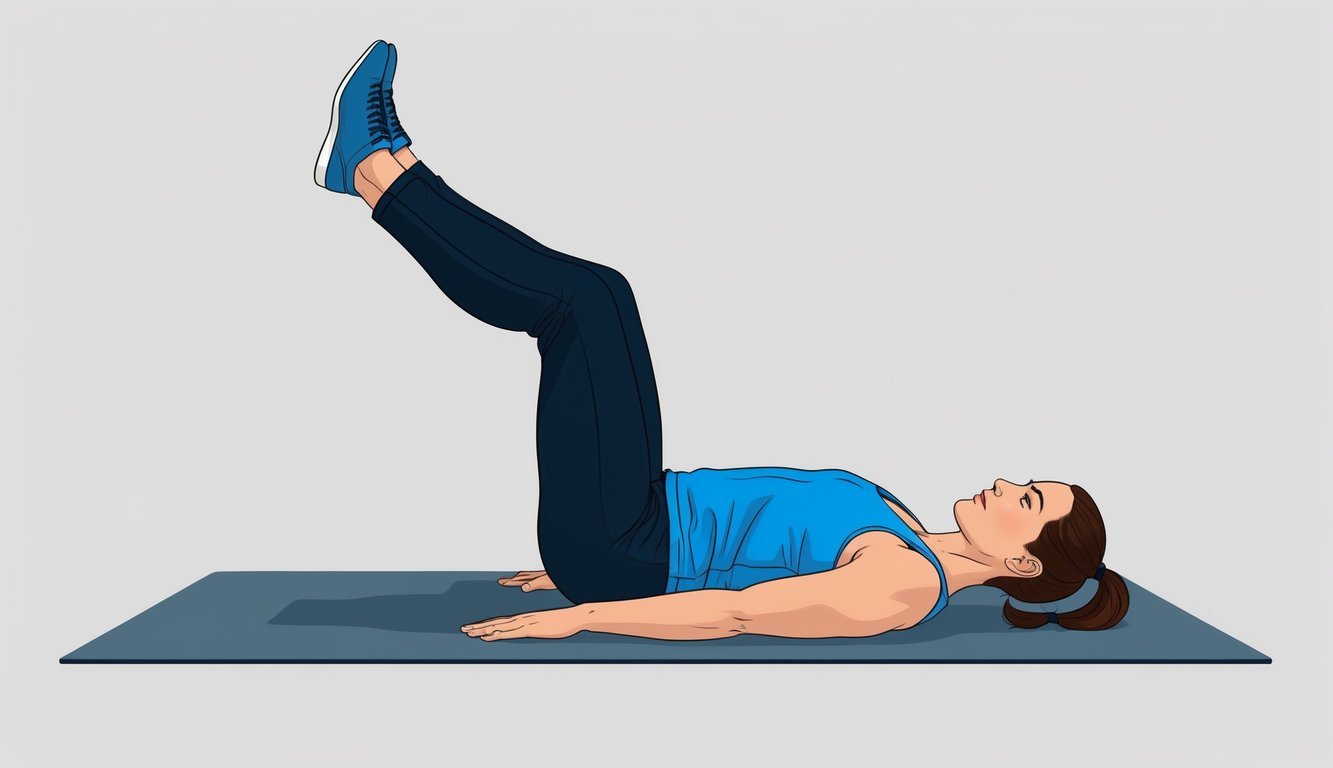
The side leg raise is a simple exercise that helps improve your balance and coordination.
To do this move, you stand with your feet together and slowly lift one leg to the side.
Make sure to keep your body straight and avoid leaning over.
It’s a good idea to use a chair or a wall for support if you’re just starting out.
Keep the leg lift controlled and steady.
This will help strengthen the muscles around your hips and thighs, which are key for maintaining stability.
Incorporating side leg raises into your routine can also enhance your posture.
As you practice, try to focus on engaging your core muscles.
This can further boost your balance and help prevent falls.
Adding side leg raises to your routine can be a great way to mix things up.
With regular practice, you might notice improvements in how steady you feel during everyday activities.
Check out how this exercise is discussed in relation to coordination in leg movement.
7) Balance Walk

The Balance Walk is a great exercise for improving your coordination and balance.
You start by standing with your feet together.
Take a step forward, placing your heel directly in front of the toes of your other foot.
As you move, keep your focus ahead.
While walking, your arms should be relaxed by your sides.
Take slow, deliberate steps.
It’s essential to maintain a straight line as you walk to enhance your balance skills.
This helps strengthen your legs and improves stability.
Keep your head up and focus on a point in front of you to maintain proper posture.
Engaging your core muscles while walking can further improve joint mobility and reduce strain on your lower back.
Practicing this technique regularly will enhance your overall coordination and confidence in movement.
Practicing the Balance Walk regularly can help improve your posture.
This exercise is especially beneficial for older adults seeking to maintain independence and prevent falls.
By focusing on balance, you engage your core muscles, which adds to your stability.
If you want an added challenge, try walking along a straight line marked on the ground.
You can also practice on a soft mat to increase the difficulty.
As your confidence grows, balance exercises like the Balance Walk become more enjoyable.
8) Swiss Ball Leg Curl
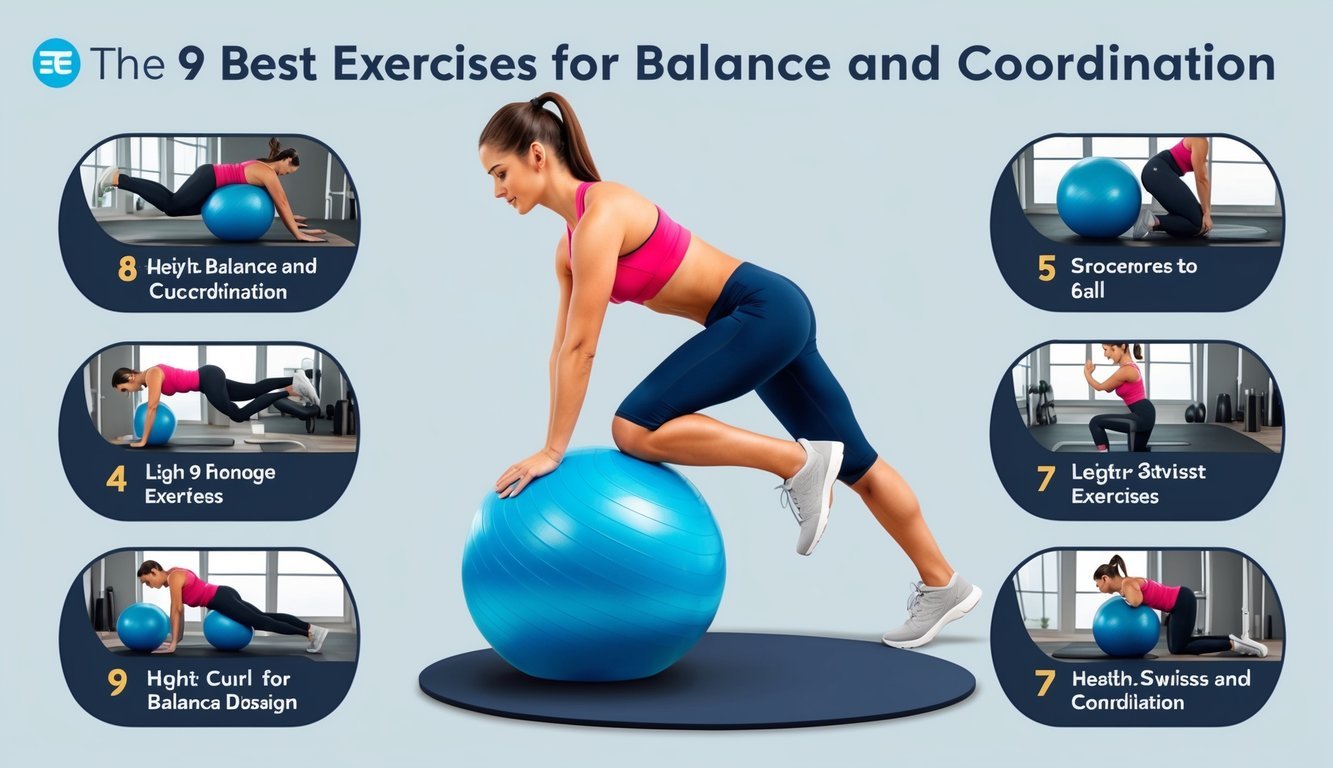
The Swiss Ball Leg Curl is a great exercise to boost your balance and coordination.
It targets the hamstrings, glutes, and core, making it a full-body workout.
By using a Swiss ball, you make the muscles work harder to stabilize your body, which improves balance.
To start, lie on your back with your feet on top of a Swiss ball.
Keep your arms by your sides for support.
Lift your hips off the ground to form a straight line from your shoulders to your knees.
This position engages your core and glutes.
Next, bend your knees to roll the ball towards your body.
Try to keep your hips lifted as you do this.
The movement should be smooth and controlled.
Extend your legs back to the starting position to complete one rep.
Doing this exercise regularly can help strengthen your muscles and enhance coordination.
It’s useful for athletes and anyone looking to improve stability.
For more exercises that help with balance, read about how the Swiss Ball can be an effective tool.
Skipping Rope
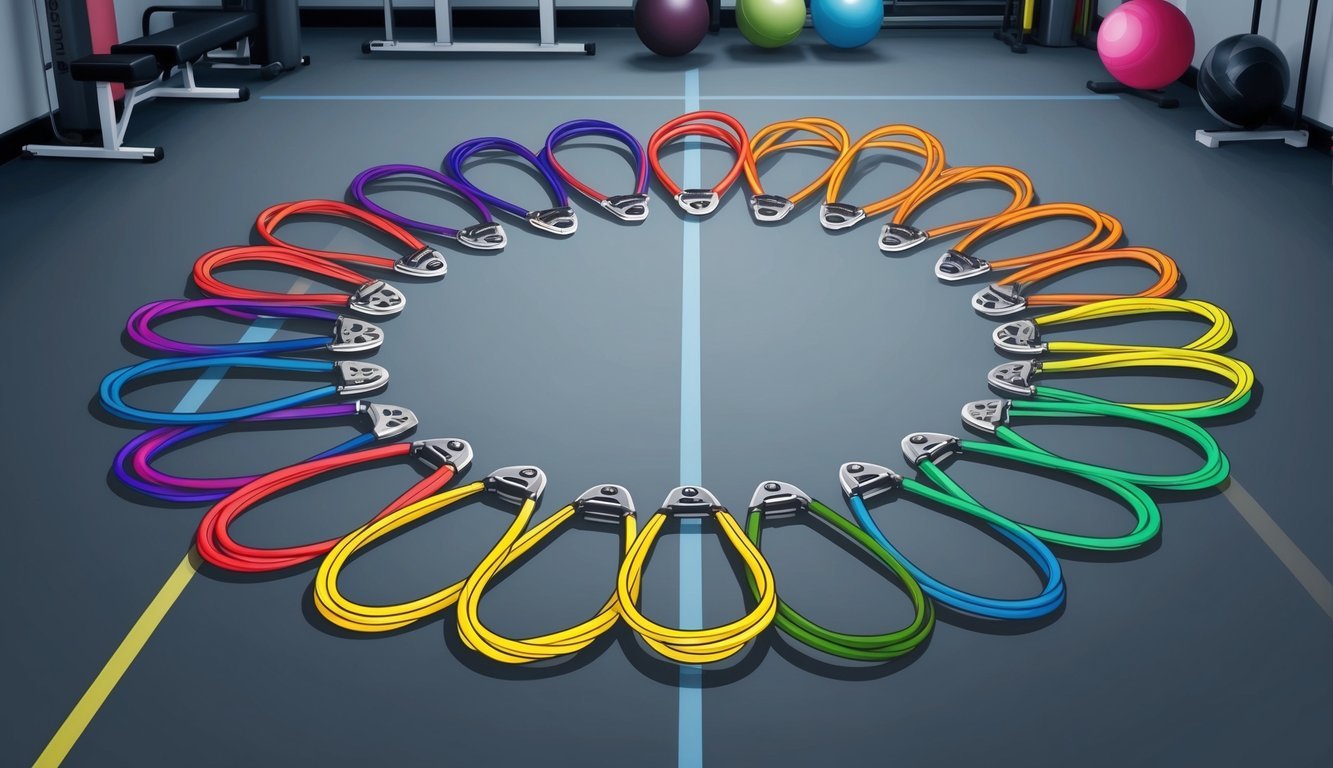
Skipping rope is a fun and effective way to boost your balance and coordination.
When you jump over the rope, you engage multiple muscle groups in your legs, core, and arms.
This helps improve your overall body control.
Starting with a few minutes a day can make a big difference.
As you progress, try incorporating different techniques like alternating feet or crisscrossing the rope.
This adds variety and keeps your workouts exciting.
Skipping rope is not just for kids.
It also boosts your cardiovascular fitness and burns calories.
This makes it a great choice for overall health.
You can do it almost anywhere, from your backyard to a local park.
Fancy rope-skipping can further enhance your agility and coordination.
Using a cordless jump rope starts you out easily before you skill up to regular rope skipping.
Not only does it improve physical skills, but skipping rope can also enhance focus and rhythm.
You’ll test your concentration as you time your jumps with the swinging rope.
It’s a full-body challenge that’s both fun and rewarding.
Understanding Balance and Coordination
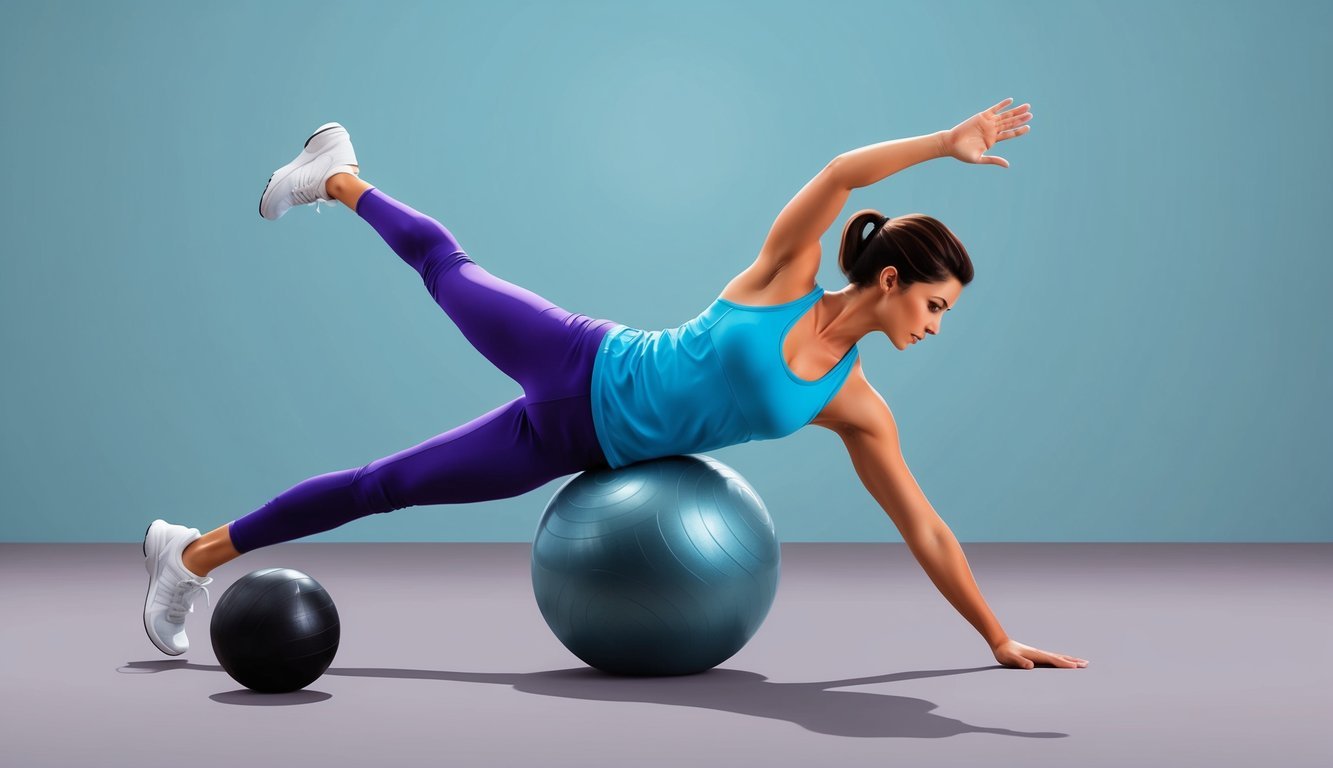
Balance and coordination are key factors in everyday movement and athletic performance.
They depend on complex interactions within the body and greatly affect how you move and perform tasks.
The Science Behind Balance
Balance involves your body’s ability to maintain a stable position, whether you’re standing still or moving.
This process depends on input from your vestibular system, which is located in the inner ear.
It helps you sense changes in position and movement.
Your eyes and proprioceptors in muscles and joints also play a role, sending signals to the brain about the body’s position in space.
When these systems work together effectively, they give you the ability to stay upright, walk, and move smoothly.
Exercises that improve balance often focus on strengthening the core and lower body muscles, which provide stability.
Activities like yoga or tai chi can significantly enhance your balance by making these muscles stronger and more flexible.
Why Coordination Matters
Coordination is about how well your muscles work together to perform movements.
It includes timing, control, and the ability to execute complex motions smoothly.
For example, coordination allows you to catch a ball, write with a pen, or dance.
It requires practice and repetition to improve because it relies on the brain’s ability to learn and process movements efficiently.
Having good coordination can improve your performance in sports and make daily activities like typing or even cooking more manageable.
Improving coordination can be achieved through activities that challenge your brain and body simultaneously, like juggling or playing musical instruments.
Coordination exercises often include tasks that require precise movements or multitasking to help enhance these skills.
Tips for Enhancing Balance and Coordination
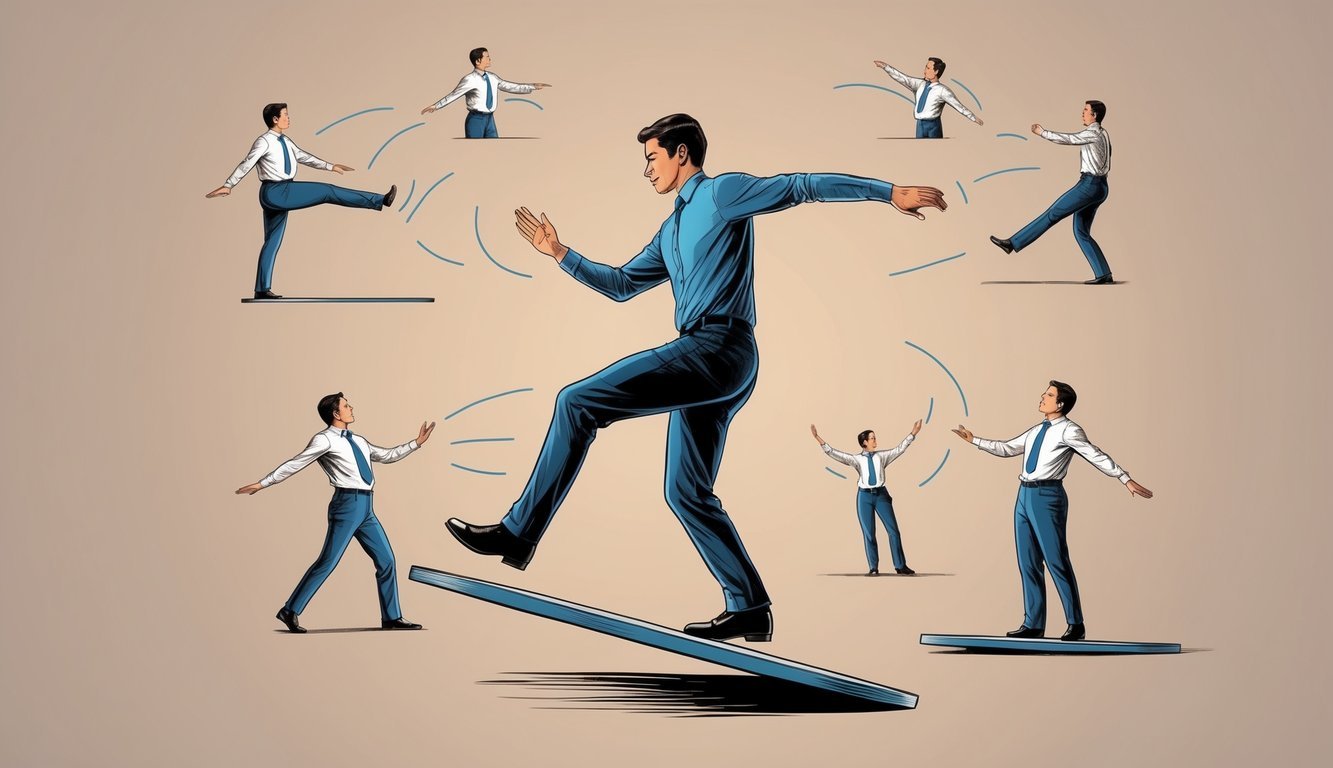
Simple changes can boost your balance and coordination.
By learning mindfulness and integrating balance exercises into daily activities, you can see improvements quickly.
Mindfulness and Focus Techniques
Mindfulness helps enhance your ability to balance.
It involves being fully aware of your body and its movements.
Practicing activities like yoga or tai chi can be beneficial.
These exercises promote a strong mind-body connection, encouraging you to focus on posture and movement.
Breathing exercises also play a vital role.
Concentrating on your breath allows you to remain calm and centered.
This focus aids in maintaining proper posture and stability during physical activities.
Visualization is another useful tool.
Imagine yourself moving with ease and steadiness.
This mental practice enhances your physical responses, making your movements more controlled.
Incorporating Balance in Daily Life
Integrating balance challenges into everyday tasks can significantly improve your coordination.
Simple actions like standing on one foot while brushing your teeth make a big difference.
This tactic uses moments you already have to strengthen your body, without needing extra time.
Another option is to use unstable surfaces.
Walking on grass or a soft mat forces your muscles to adapt, boosting your stability.
These surfaces challenge your body’s ability to adjust and maintain balance in different scenarios.
Playing sports like golf not only provides fun, but also enhances balance and coordination.
Activities requiring precise movements, like playing golf, promote better control of your body.
They help improve coordination by demanding focus on posture and movements.

